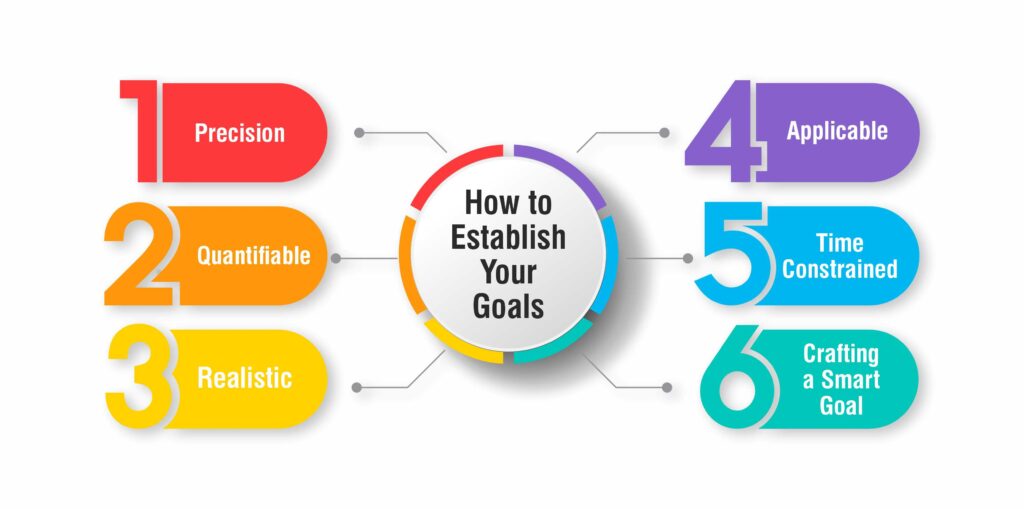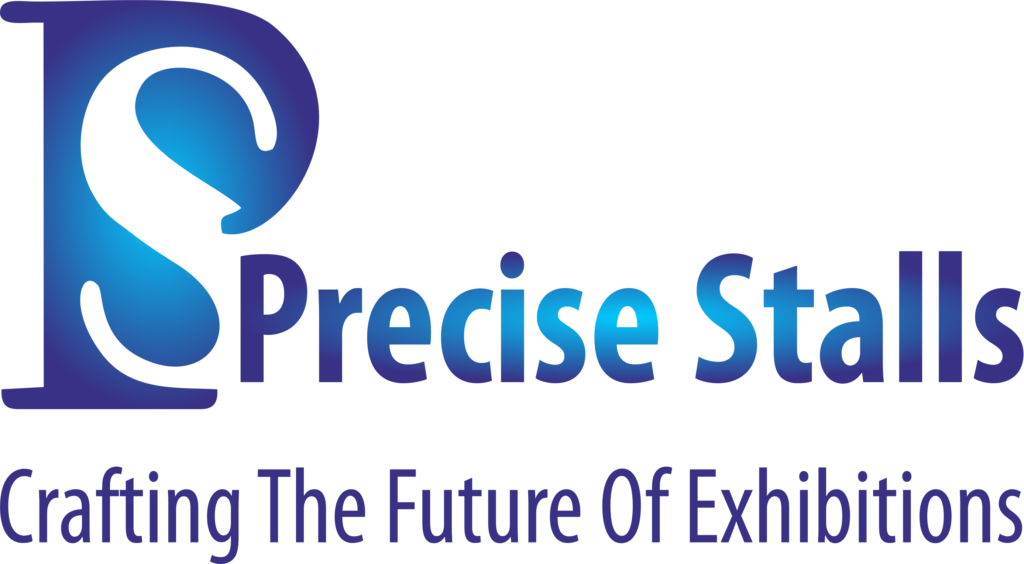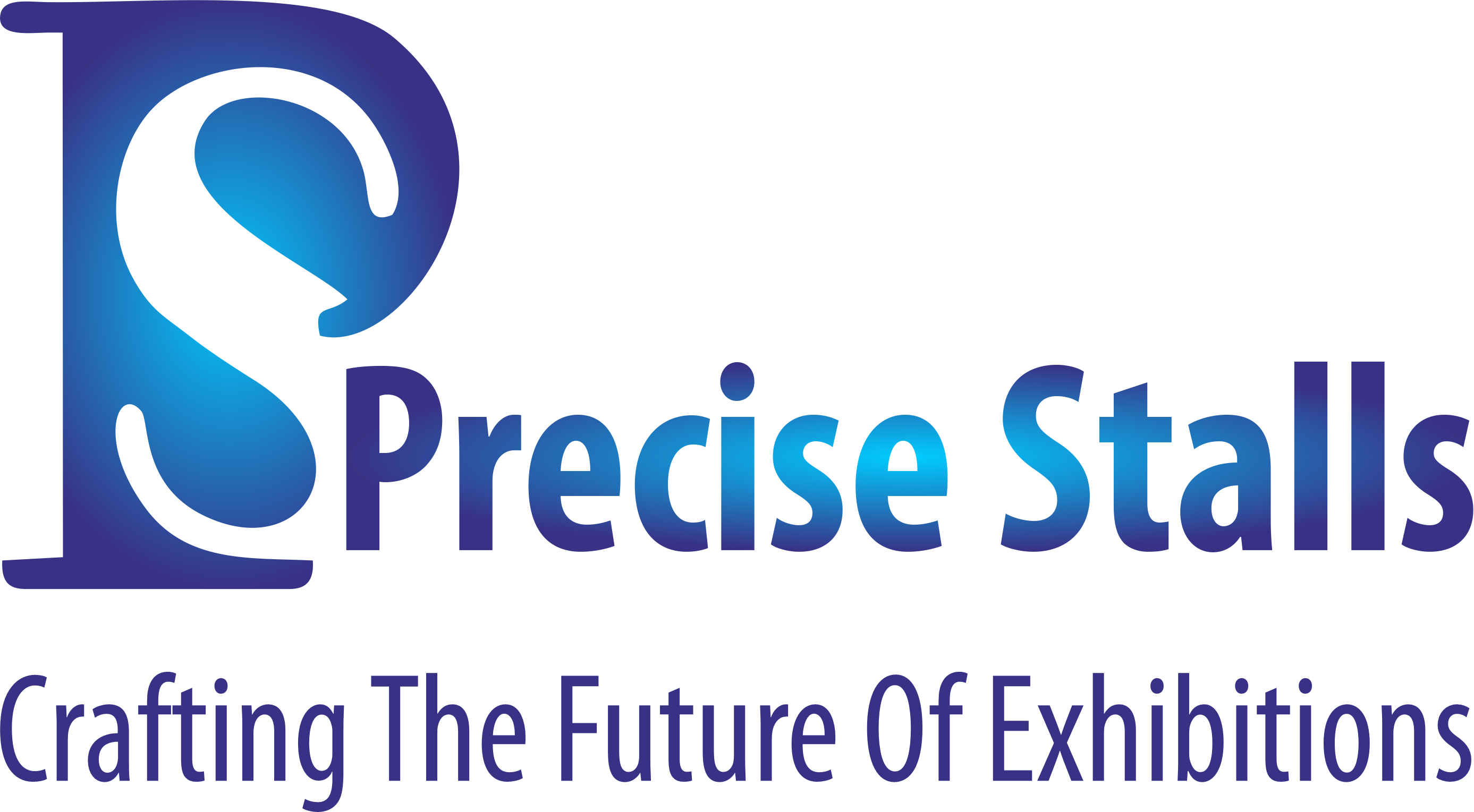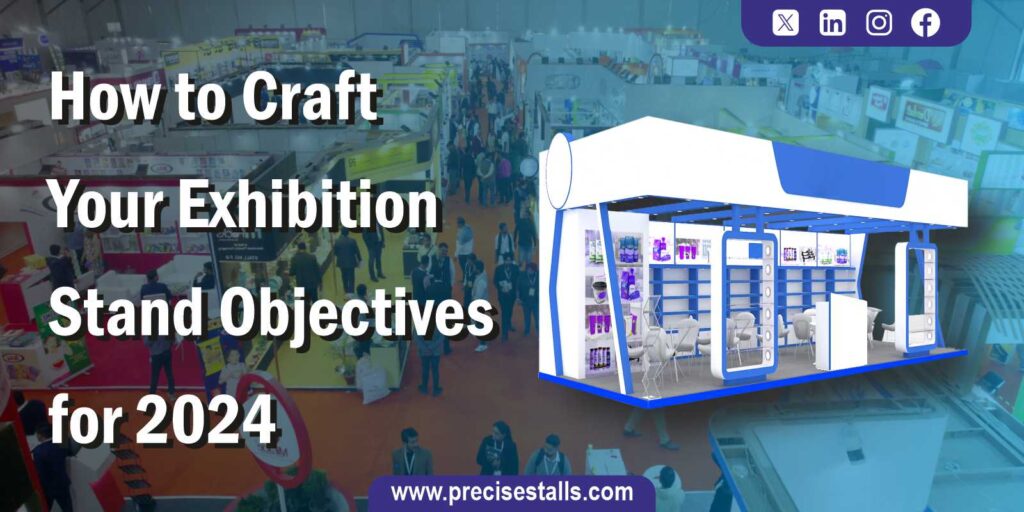Welcome to the threshold of 2024, where the exhibition world awaits your brilliance to illuminate its stages with mesmerizing stand designs, unparalleled customer service, and visionary concepts. As the curtain rises on this Year, it’s your cue to shine and leave an indelible mark. Yet, amidst the flurry of possibilities, one crucial step stands between you and triumph: defining your goals.
Before delving into the labyrinth of exhibition decisions, it’s imperative to crystallize your aspirations. Setting exhibition goals for the upcoming year not only provides a roadmap but also serves as the compass guiding your strategic endeavors. It’s the cornerstone upon which you can construct your path to success, ensuring every effort propels you closer to your vision.
A journey where we unravel the art of goal setting, offering a beacon of clarity in the midst of endless opportunities. Let’s embark together on this odyssey, discovering the power of intentionality and the keys to unlocking a year of unparalleled achievement.
Which goals are the right fit for your exhibition stand?
With exhibition stand presenting numerous chances to spotlight your business or product to prospective customers, clarity on your desired outcomes becomes paramount. Start by defining the purpose behind your exhibition presence, then tailor your goals accordingly. This strategic approach not only guides your selection of display stand designs but also shapes your interactions with booth visitors, ensuring alignment between your objectives and exhibition tactics.
Explore the Spectrum of Goals:
When strategizing for your exhibition stand, you can categorize your objectives into three key areas:
- Sales
- Communication
- Marketing
However, it’s crucial to intertwine these exhibition goals with your broader company marketing objectives rather than treating them in isolation. Take a moment to identify areas for enhancement or emphasis within your business and formulate overarching company goals based on these insights. Your exhibition stand goals should serve as a roadmap for achieving these broader objectives.
For instance, if your company aims to “increase profit margins,” focusing on sales goals at the exhibition would be most effective. Alternatively, if your Goal is to “boost brand awareness,” a communication-focused objective would be more suitable. Similarly, if your aim is to “identify a new target market,” aligning with a marketing goal would yield optimal results. By aligning your exhibition goals with your company’s overarching vision, you pave the way for synchronized success.
- Sales goals might revolve around objectives such as “boosting revenue” or “conducting productive sales meetings.
- Communication goals could entail “cultivating relationships with potential clients,” “enhancing the company’s reputation,” or “garnering media attention.
- Marketing goals might include “conducting thorough market research” or “introducing innovative products and services.
While setting goals for your exhibition, it’s vital to maintain focus on a singular objective. There’s no need to strive for goals in all three categories simultaneously. Attempting to achieve multiple goals at once can scatter your efforts and potentially lead to missing the mark entirely.
Instead, dedicate your attention to one specific Goal for the exhibition and channel all your resources towards its realization. Ultimately, maximizing the benefits of your exhibition experience hinges on a clear and precise understanding of its purpose and objectives.
An Affordable Way to Exhibit with Your Modular Stand Design
A Modular Stand Design system can save you money when showcasing your brand. With this system, you can adjust the stand to fit the space available at each exhibition or trade show. Many brands participate in multiple shows throughout the year, and the floor sizes can vary significantly between them. Switching from a standard 3x3m shell-scheme stand at one show can be challenging to a custom 6x3m stand at another. Not only does this lack consistency in branding, but it’s also expensive to invest in a new custom stand for each event.
You can adapt it to fit different spaces at different shows by opting for a modular and reusable exhibition stand. This maximizes the potential of the air you’ve already invested in. Over time, this approach becomes much more cost-effective because you get more use out of the stand without needing constant reinvestment.
How to Establish Your Goals:
Prior to embarking on the journey of goal achievement, it’s essential to understand the process of goal setting. Once you’ve determined which of the three types of goals aligns with your exhibition objectives, you can proceed to define your exhibition stand’s purpose more clearly. To facilitate this process, we’ll guide you through the SMART method, ensuring that your goals are Specific, Measurable, Attainable, Relevant, and Time-bound.

Precision
Ensure that your Goal is crystal clear and precisely outlines what you aim to achieve. Delve into specifics! The more detailed your description of the desired outcome for the exhibition, the clearer your path becomes. Consider the fundamental questions of who, what, when, where, and why:
- Who needs to be involved in accomplishing this Goal?
- What exactly are you striving to achieve?
- When do you anticipate achieving this?
- Where will this Goal be realized?
- Why have you chosen to pursue this particular Goal?
Quantifiable
For a goal to be effective, it must be measurable to ascertain its success. Consider the metrics you can employ for this purpose. By ensuring your Goal is quantifiable and establishing a method to gauge it, the likelihood of success increases. Here are examples of suitable metrics:
- Visits to your exhibition stand
- Instances of media coverage
- Sales volume
- Acquisition of new leads
Realistic
While your goals should ignite inspiration and enthusiasm within your business, they must also remain within the realm of achievability. Avoid the pitfall of setting unattainable goals that set you up for failure. Instead, focus on crafting goals that you can realistically reach. Evaluate whether you possess the necessary tools and skills to achieve your Goal. If not, consider how you can acquire them to facilitate your journey toward success.
However, beware of setting goals that are too easily attainable. Aim for a balance between realism and challenge to foster the most significant sense of accomplishment, both in business and personally, upon their achievement.
Applicable
Time-Constrained
To enhance your likelihood of goal achievement, it’s essential to establish a realistic deadline. This not only aids in effective time and effort management but also prompts you to evaluate what can feasibly be accomplished within the specified timeframe and to what level of quality. The timeline you set should align with the nature of your goal achievement.
For instance, if your aim is to draw 100 visitors to your exhibition stand, setting a deadline by the conclusion of the expo would be appropriate. Conversely, if your objective is to secure 40 leads, a suitable deadline might be extended to a week after the expo to allow for finalization. An effective strategy for meeting deadlines is to establish smaller interim deadlines to work towards throughout the process. Implementing time-constrained goals not only instils a sense of urgency but also serves to enhance productivity.
Crafting a SMART Goal
To formulate your SMART Goal, amalgamate the various elements we've explored into a concise and robust statement. While the statement need not adhere strictly to the sequence of the acronym, it must encompass all five components.
Consider these examples of SMART Goals:
- By the conclusion of the three-day expo, my business aims to secure 25 new leads through the collection of contact information.
- Within a two-month timeframe, my business endeavors to achieve $10,000 in revenue from sales generated by the products showcased at the exhibition.
What Comes After Setting SMART Goals?
Once you’ve established your SMART goals, the subsequent steps are straightforward: stay committed! Document your exhibition goals, ensure your team is well-informed, and persistently strive towards their attainment. Remember, goal setting is a continual process, so dedicate time to periodically review and assess their efficacy.
And remember – set goals that inspire you! Your exhibition journey can be both enjoyable and stimulating, driving business growth as long as you’re motivated and driven to achieve success.
Conclusion:
Crafting your exhibition stand objectives for 2024 sets the stage for a successful and impactful presence in the exhibition landscape. By following the SMART framework and aligning your goals with your business vision, you can create a strategic roadmap that maximizes your exhibition experience. Remember to remain flexible and adapt your objectives as needed while staying focused on driving measurable results. With clear objectives in place, you’re poised to make the most of every opportunity and achieve your desired outcomes in the year ahead.





